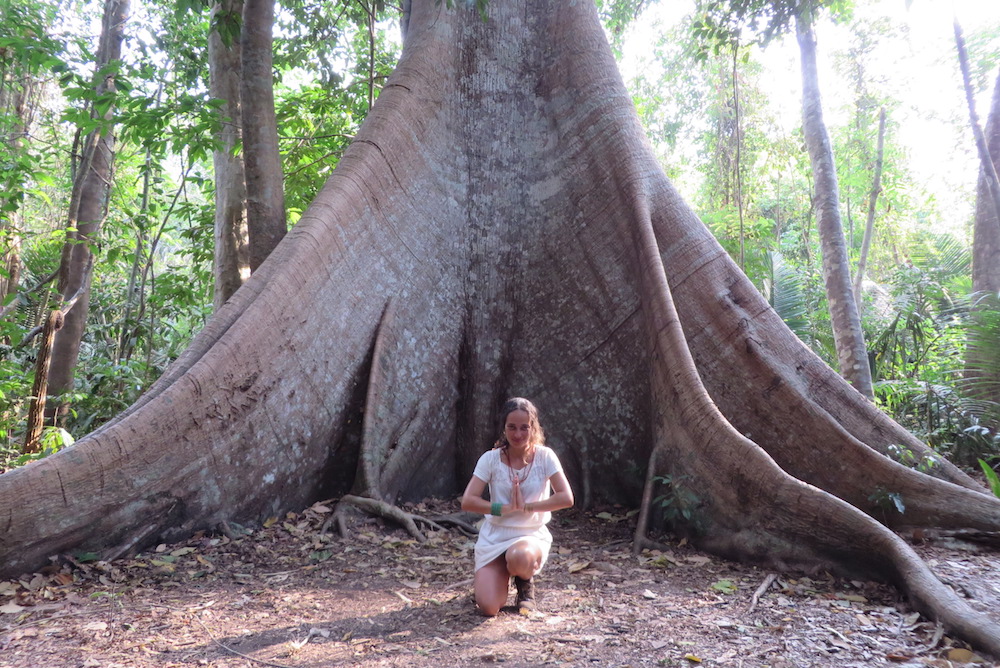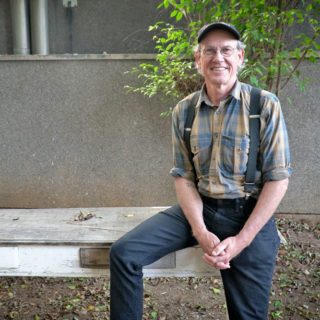What does the Amazon Rainforest mean to people, especially those who live hundreds of miles away from it? They may see it is a source of daunting news related to deforestation, or the solution to global warming. Or a beautiful place, but inaccessible. What all these feelings have in common is a certain disconnection with the forest.
This detachment from nature is a worldwide phenomemon. “It’s inevitable, since everything we consume comes from far away and has no connection to the land we live on,” says the American writer Charles Eisenstein, author of books such as Sacred Economics and The More Beautiful World Our Hearts Know Is Possible (North Atlantic Books). “But an increasing part of our lives takes place in built environments, especially digital ones.” Eisenstein says one must fall in love again with nature. “But to love a person, you have to know them – we must do the same for the Amazon Rainforest.”
MAGIC AND HOSTILE
In Brazil, the detachment from the green may have historical origins. “When Europeans arrived, they had two very conflicting feelings about the forest,” says Karina Miotto, founder of the Amazon Reconnection project. She earned a master’s degree in holistic science from Schumacher College in England, writing a dissertation titled “Reconnection with the Amazon: Awakening Deep Feelings for the Rainforest.” Miotto continues, “Some viewed it as a magical and exotic place, while others characterized it as a totally inhospitable place, a real hell.”
Miotto believes that these impressions have been perpetuated in Brazilian culture through books and movies as well as by the education system. “This view has been reinforced by governments who have claimed that the Amazon must be ‘developed,’ which causes more segregation than union between people and the forest,” she says. “This paralyses the citizenry, so that they see the increase in deforestation, but only as one more piece of data.”

Karina Miotto of the Amazon Reconnection project: The best way to teach about the Amazon Rainforest is through amazement (Miotto’s Personal Archive)
HOW TO FALL IN LOVE WITH FOREST
Promoting reconnection with the Amazon Rainforest is part of a move away from blaming humans for environmental problems. “In order to have better dialogue and bring the public closer, we must show solutions, without pointing the finger at anyone,” says Maurício Bianco, director of development and communication of the NGO Conservation International.
One of the group’s campaigns (watch it here), narrated by the Brazilian actress Camila Pitanga, recalls the power of the forest: It regulates rain, maintains the stability of the climate, shelters medicinal plants, even for ills yet unknown. The video had 3 million views and reached, through social networks, an audience not usually interested in environmental issues.

Virtual reality is one of the technologies used by the São Paulo-based Socio-Environmental Institute to digitally immerse the public in the Amazon Rainforest (ISA/Publication)
The Brazilian civil society group Instituto Socioambiental (Socio-Environmental Institute -ISA) began two projects with the same objective: reaching those ‘unconverted’ people and informing them about the forest. The ISA has created a Gogle Earth tool called ‘I am the Amazon’ (access here), that uses 360º videos, 3D images, maps, sounds and text to get viewers to listen to the forest, see it and explore the cultures that are part of it. The ISA also made a short virtual reality film called Fogo na Floresta (Fire in the Forest), which guides viewers to the middle of a Waurá people’s village, located in Xingu Indigenous Park in the Brazilian state of Mato Grosso. “The use of virtual reality has enabled a deep narrative that takes you into the forest,” says Bruno Weis, communications coordinator for ISA. “This is important, since a lot of people do not have the opportunity to go to an indigenous village themselves.”
BEYOND THE LUXURY HOTEL
In the Amazon Rainforest, if you really want to get connected, it is worth turning off the engine of the boat, following the flow of the river, listening to the sounds of the forest, feeling the fear of being in the middle of it … that awakens a real connection,” says Karina Miotto. With Reconexão Amazônia (Amazon Reconnection), a project that became a pioneer in discussing the importance of the affective connection with the forest, Miotto promotes communication and mobilization campaigns to protect the Amazon, carries out educational actions and facilitates experiences, taking groups of people to experiences in the forest.
To encourage tourism and lower travel and lodging costs, it will be necessary to reverse decades of wrongdoing in this sector, says Mariana Aldrigui, who teaches in the Leisure and Tourism graduate programs at the University of São Paulo (USP). “The Amazon Rainforest is difficult for an average tourist to understand,” she says. “There have been years and years of misguided approaches, highlighting only the exotic, which is often perceived as dangerous. We need to create a product that is easy for the visitor to consume, just as it is easy to buy a tourist package for Disney.”
THE EDUCATION OF SENSES
One way to attract more people, according to Aldrigui, is to show that the forest is a place of contemplation and relaxation, including rich opportunities for spiritual practice. “This work must be done in a responsible way, privileging the conservation of fauna and flora and the development of the local population,” she says.
One of the greatest examples of responsible tourism in the Amazon is, according to the Ministry of Tourism, the Uacari floating lodge near Tefé. Winner of the Brazilian Association of Tour Operators’ Sustainability Award, the hotel generates income for local communities (75 percent of management positions are occupied by people from the region) and follows a policy of minimizing its environmental impact, in waste management and many other areas.

Uacari floating lodge near Tefé, Amazonas, has award-winning sustainable practices (JP Borges Pedro/Uacari/Publication)
Other initiatives that promote sustainable tourism and, thus, facilitate connection with the forest are Vivejar (a play on words combining the Portuguese verbs meaning “live” and “travel”) and Turismo Consciente (Conscious Tourism), two tour operators specializing in itineraries that bring visitors closer to the culture and reality of the residents.
Education provides still more avenues for encouraging humans to rejoin nature. “I believe the best way to teach about the Amazon Rainforest to children is through amazement,” says Miotto. “You have to show that the forest is much more than numbers: How many miles the river has, how many hectares have been deforested, how many types of plants there are. None of those facts arouses amazement. You have to pass this information on, but in a way that generates positive emotions.”
Such emotion leads to affective bonding. To feel that connection, you do not need to reside in the middle of the forest. “If you do not live near the Amazon Rainforest, your priority should be to get to know your own environment, restore lost connection, and become a resident again,” says Charles Eisenstein, the American author. “Just as loving a person teaches us to love all people more deeply, we will love the Amazon Rainforest if we love the place where we live.”
This content is promoted in partnership with Instituto Socioambiental (ISA) and Greenpeace.
Published on 04/17/2018



